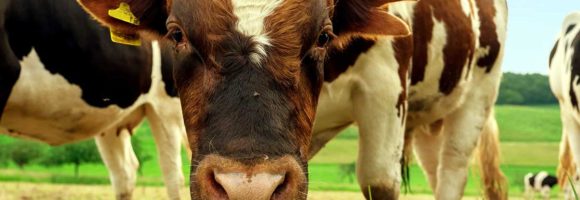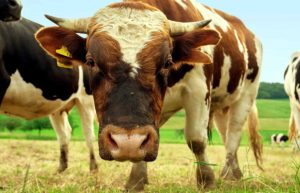Cystic Ovarian Disease in Cattle

Usually seen in the first two months after calfing, ovarian cysts called Cystic Ovarian Disease in cows can be caused by a number of different factors. These include:
- Dystocia
- Genetics
- High Productivity
- Metabolic diseases
- Negative energy balance
- Retained Placenta
- Stress
Defined as a structure that measures greater than 2.5 inches in diameter and remains on the ovary for more than 10 days, ovarian cysts may be in the form of luteinized follicular cysts, follicular cysts or cystic corpora lutea. While follicular cysts result from failure of ovulation and luteinization, luteinized cysts result solely from failure of ovulation. Follicular cysts are blister-like structures while luteinized cysts are harder to the touch. Cystic CL cysts are characterized by a fluid filled center.
Regardless of the type, symptoms of Cystic Ovarian Disease in cattle include:
- Abnormal estrous behavior
- Persistent oestrus
- Shortened oestrus
- Intervals or failure to cycle
- Bullying behavior
Since most cysts will not resolve on their own, early treatment is particularly important. Treatment strategies typically involve treating the underlying factors responsible for the development of the condition, such as correcting nutritional or metabolic disorders. This may include hormonal treatments used to induct normal follicular turnover while resuming cyclic ovarian activity. Hormones commonly used in treatment include progesterone, prostaglandins and gonadotrophin-releasing hormones.
If your Arizona cattle have passed away, The Last Ride Arizona provides large animal removal service that is professional and courteous. Call or Text Us Today: (602) 819-6854
